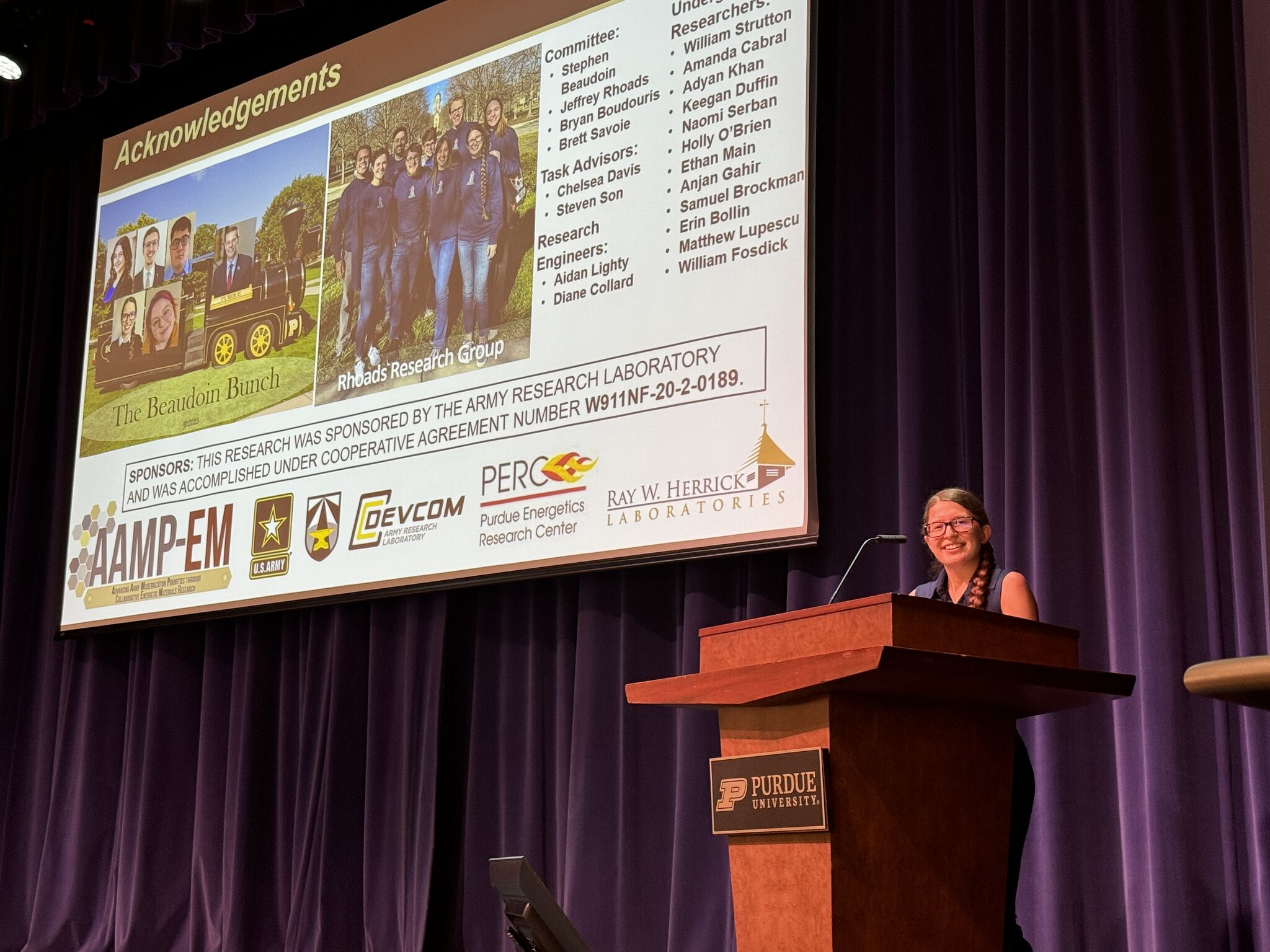
What does your dissertation work entail?
My dissertation aims to provide a straightforward, yet generalizable approach to 3D-printing propellant systems, from their initial constituents to 3D-printed architectures — hence its title “From Dust to Deposition.” My work evaluated the effects of solid content, binder molecular weight and particulate additive characteristics (shape, size, modality and composition) in a single surrogate propellant binder system on multiple responses including extensional rheology, compressive mechanical behavior and die swell.
What are you most proud of about your research?
I'm immensely proud and grateful to have contributed in any way to this very purpose-driven, next-generation development and modernization effort of the manufacturing of energetic materials. But also, having the privilege and pleasure to serve as a graduate research mentor for 12 undergraduate students throughout my PhD career here has been incredible as their scientific contributions and enthusiasm enriched the research and made the journey especially rewarding.
What do you think is your most impactful contribution to the field?
I believe the key takeaways from this work are the lessons learned in mixing, handling and 3D-printing suspension systems across wide arrays of solids loadings, i.e., from unfilled to dilute to concentrated to encroaching on granulated matter. The hope is that others can apply lessons from this playbook to also follow their “Dust to Deposition” journey for the material system of their choice—it may not be a defense-related material system, but any solids-filled formulated product in broader contexts as well.
What are your plans for the future?
I'm thrilled to share that I have accepted an offer with Northrop Grumman as principal engineer with a tentative start date in May. I'll be working in Minnesota on the Armament Systems team within the Weapon Systems Division.